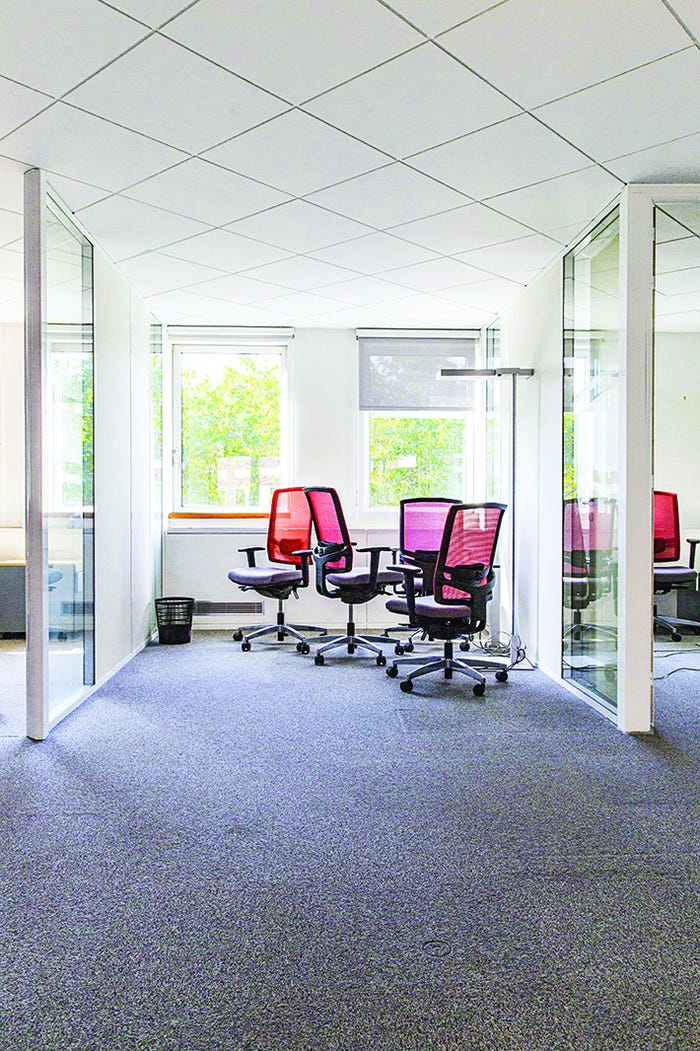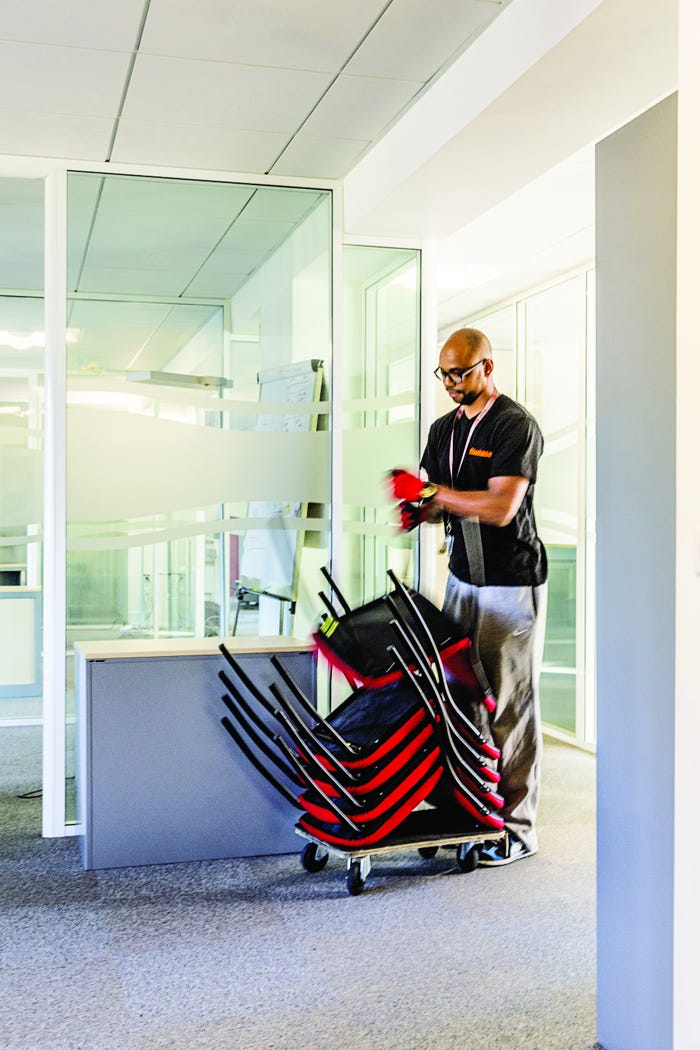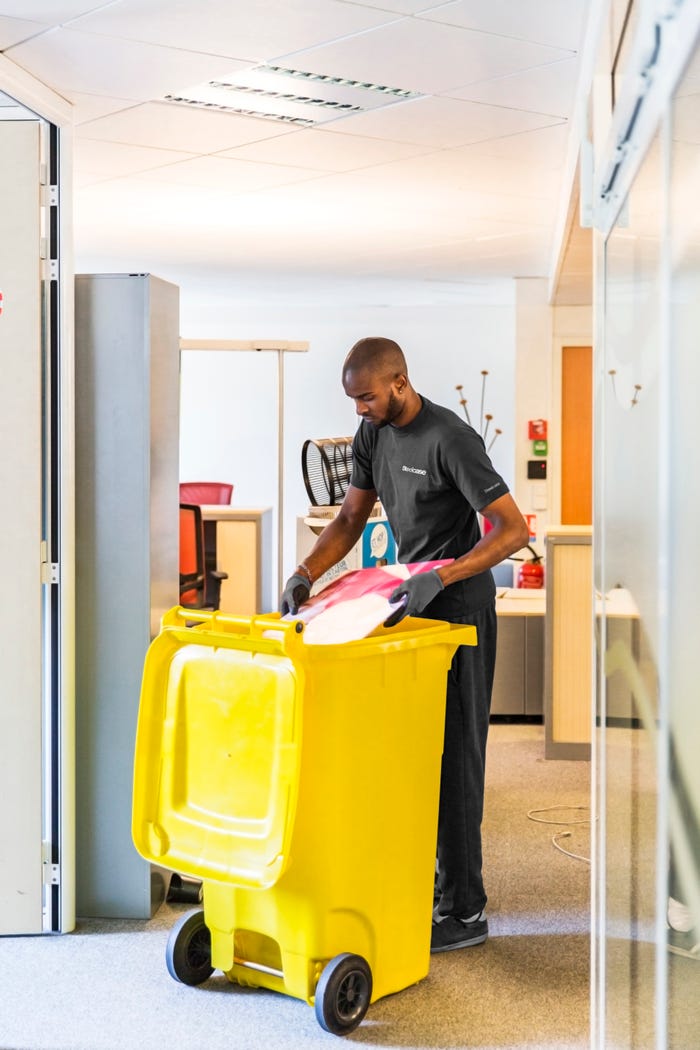How Steelcase’s Initiatives Support a Circular Economy
Instead of just simply focusing on waste diversion and sustainable design, the company is making the transition to a circular economy business model.

Steelcase, a Grand Rapids, Mich.-based furniture designer and manufacturer, is working to combat the estimated 8.5 million ton annual furniture waste problem. But, instead of just simply focusing on waste diversion and sustainable design, the company is making the transition to a circular economy business model.
“It has been estimated that 70 percent of what the furniture industry produces goes to landfill,” says Angela Nahikian, director of global sustainability at Steelcase. “Looking at this number, we might say that waste is the central issue. But really, it’s just a symptom of a much bigger problem: an economic model that is built on taking, making and throwing away.”
For more than a decade, Steelcase has been piloting a number of different circular business models, focusing on designing products for circularity, finding new outlets for usable furniture, diverting food waste from landfill and more.

“We’ve done a lot to optimize our operations, but we know our greatest opportunity for impact is not by focusing within our own walls but by focusing on the millions of square feet that we furnish each year,” comments Nahikian. “We help our customers create real estate utilization strategies and insights that enable people to be more effective in more desirable work environments with a smaller footprint. We also embed technology in the workplace to help businesses understand space utilization and efficiency and make informed decisions about changes and reducing wasted space.”
Steelcase currently has two end-of-use programs available to customers around the globe. Eco-Services, which services Europe, is a program that helps companies evaluate their furniture inventory and identify options for reuse, donation and recycling. And Phase 2 is the U.S. equivalent of that program with slightly different offerings.
Over the years, the two programs have been a success when it comes to keeping furniture out of landfill. Last year alone, Eco-Services handled 30,600 cubic meters of material and Phase 2 diverted 6.4 million pounds of furniture from landfill from more than 1,300 decommission requests.

“We are proud of our programs’ accomplishments thus far, and our biggest goal going forward is to build global capability for what we are internally calling asset interception,” says Dan Dicks, director of global end-of-use services at Steelcase. “What we mean by that is that we want to enhance our ability to recapture assets from customers when they’re done using them and then keep those assets in play by either reselling, redistributing, repairing, refurbishing, remanufacturing or recycling them. All of those things are benefits to the circular economy, and we are working toward developing smart infrastructure for all of those methods.”
In addition to diverting a large amount of furniture from landfill, Steelcase has led a number of other efforts to reduce its waste output by 44 percent since 2010, such as recycling more than 23,000 tons of materials and composting approximately 153 tons of food waste in 2015; removing at-desk trash cans and encouraging employees to use the company’s recycling center product, Victor2; designing and redesigning products to minimize materials used and improve yield in manufacturing processes; adjusting production processes to make-to-order practices to reduce unnecessary or unneeded inventory; using items like panel fabric waste and PET recycled water bottles as raw materials to create new textiles; utilizing Environmental Management Systems that are ISO 14001 certified in all of its manufacturing facilities; conducting research in the form of Life Cycle Assessments to measure and analyze products’ environmental footprint; building a large portfolio of Cradle-to-Cradle-certified products; and partnering with companies in need of short-term work or event spaces.

“At Steelcase, we believe that waste reduction strategies aren’t the sole responsibility of a single individual or group,” states Nahikian. “People across the company are engaged and empowered to continually search for solutions where waste can be transformed to value. For example, our manufacturing facilities accumulate excess inventory and donate materials such as wood tops and drawer pulls to organizations like Habitat for Humanity, and our Gesture trade-up program provides customers with the opportunity to turn in older chairs for our innovative new seating solution, Gesture.”
All of Steelcase’s circular economy initiatives have helped the company exceed its goal of reducing its waste output by 25 percent by 2020. And the company hopes that its future sustainability initiatives will help reduce its waste output even more.
“In our industry, design trends are changing daily, and we need to be able to change as the industry changes,” comments Dicks. “As a company, we have to be with our customers throughout their entire journey, essentially helping to eliminate the model of take, make and dispose. We plan on continuing to share our circular economy approach with our customers to achieve this and create even more products and services that will benefit the environment, the customer and Steelcase.”
About the Author
You May Also Like




